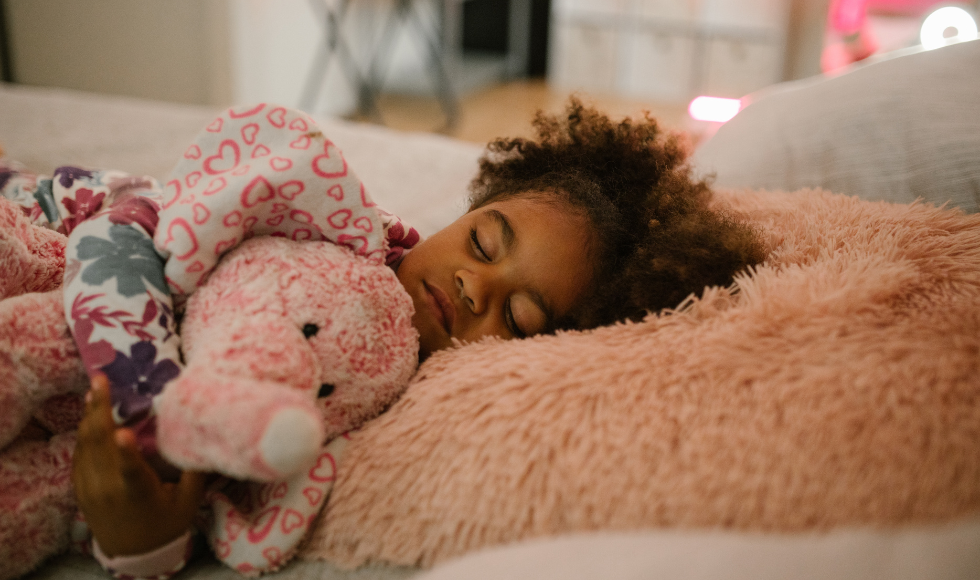Daylight saving and kids: What you need to know

BY Adam Ward
November 3, 2023
Rolling back the clocks at the end of daylight time is often paired with gaining an hour of sleep, but for parents of young children it is anything but refreshing.
Daylight time, also known as daylight saving, is observed in much of Canada and the United States. It runs from mid-March to early November, annually. This year, the return to Standard Time will take place overnight Sunday, Nov. 5.
Daylight time was conceived as a means of pushing back the clock on when darkness falls during the warmer months. While most of us can contend with the transition of time, children aren’t so easily adjustable.
We spoke with Anya McLaren-Barnett, an assistant professor with McMaster University’s Department of Pediatrics and an expert on sleep, about the impact rolling back the clocks has on the youngest of observers.
Can you explain the impact the time change has on kids and sleep?
The time change in March and November can cause sleep problems for children and parents. In November, when the clocks “fall back” younger children will get up at their regular time which ends up being an hour earlier and so parents of young kids tend to be most impacted compared to parents of older children, who likely enjoy the shift to a later bedtime and wake times because this is more closely aligned with their natural rhythm.
With the time change in the spring, however, teens may struggle with earlier wake times and a shift in bedtime that does not align with their intrinsic sleep clock. Of course, in either case, there are downstream impacts on not only the child but the parent. This includes, but is not exclusive to, attention, impulsivity, energy levels and mood.
Why is it difficult for young children to adjust to the time change?
We all have an internal clock or circadian rhythm that regulates sleep as well as other bodily functions such as appetite and mood. The internal clock is dependent on light exposure, specifically natural light in the morning which helps to reset our clock for the day and is important for high-quality sleep.
What happens with daylight saving time is that it leads to darker mornings and more evening lights. This basically leads to a lapse in our sleep-wake cycle making us feel tired in the morning and alert in the evening.
The issue with this misalignment in circadian rhythm is that it can contribute to sleep loss or sleep debt and can exacerbate underlying sleep disorders in children. The highest period of vulnerability is in March and even though the loss in time is only an hour, there is evidence that in adults daylight saving time is linked to an increase in heart issues, mood problems and motor vehicle collisions.
It can take a couple of weeks for children to adjust to the time shift. Is there anything parents can do to aid in the transition?
For younger kids, the week before the time shift, parents can move their bedtime by about 15 minutes every night until the bedtime is an hour later from their regular bedtime. So, if a child’s bedtime is 8 p.m., over four or so days, it is moved to 9 p.m. When the change in time occurs, the bedtime will be their regular bedtime of 8 pm.
For springtime, the opposite can be done. Bedtime is moved back to an earlier bedtime over the course of the week. This gradual transition can be helpful for parents and an easier adjustment for kids as it allows for a gradual shift as opposed to a sudden change in the sleep times.
Teens on the other hand may welcome the fall back (adults too), but it is to encourage teens not to intentionally stay up later than normal as this can lead to worsening sleep debt.
Some provinces and U.S. states have talked about ending daylight time. Would that be beneficial?
It likely would be. Daylight time basically leads to a sleep schedule that does not align with our body’s natural sleep system and this misalignment likely impacts individual and societal health.
A few years ago, the U.S. Center for Disease Control and Prevention declared poor sleep health, specifically inadequate sleep time, a public health epidemic. The Public Health Agency of Canada reports that one in three children have difficulty going to sleep or staying asleep, one in four children are not getting enough sleep and one in 10 children do not find their sleep refreshing.
I think that poor sleep health in children is a silent public health epidemic and that the focus on sleep in children shouldn’t be exclusive to when we change the clocks, but all the time.


